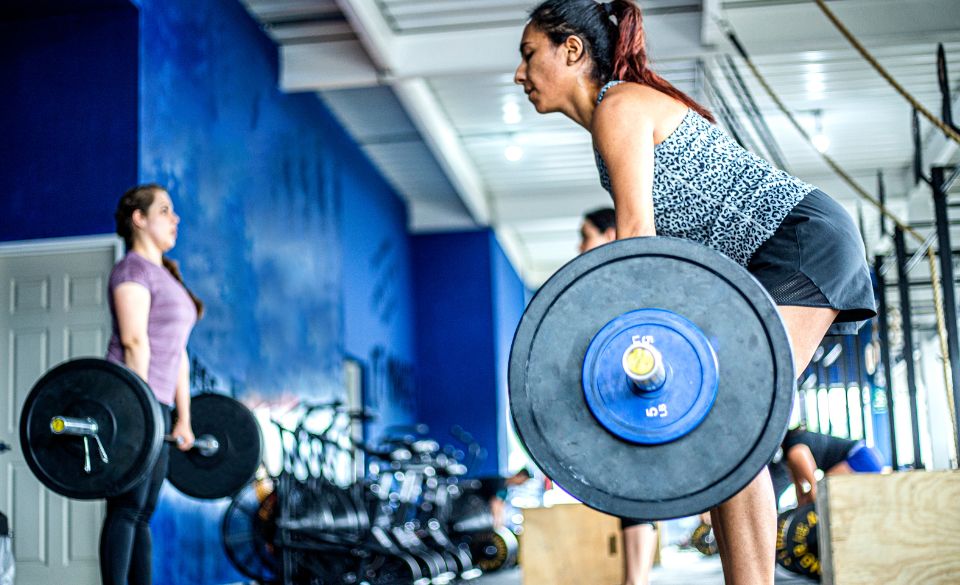
Lifting Weights with a Herniated Disc – All You Need To Know
What is a Herniated Disc?
A herniated disc is an injury to the spine that results from damage to one of the discs between the individual vertebrae. The discs act as cushions between the vertebrae, allowing for flexible movement of the spine and providing shock absorption during activities like walking and lifting weights. When the disc becomes injured, it can protrude from its original position and cause pressure on nearby nerve roots or the spinal cord, resulting in pain and other symptoms.
Discs are composed of several layers, the outer layers being made of thick and tough cartilage, and the inner layers of a jelly-like material. With age or injury, the outer layers of the disc may tear or rupture and the inner layers of jelly material can protrude into either the spinal column or into the spinal nerve roots. Herniated discs can also occur when a disc weakens due to aging or weakening of the surrounding tissue.
Herniated discs can lead to a variety of symptoms in the affected area. This may include localized pain, numbness, tingling, and burning or aching sensations. Depending on the location of the herniated disc, a person may also experience weakness, muscle spasms and neurological changes. If the disc presses on the sciatic nerve, this can result in sciatica, which causes radiating pain to the buttocks, legs and sometimes feet.
The severity of the herniated disc and the accompanying symptoms can vary. In many cases, the pain subsides after a few weeks and proper rest. In other cases, medical intervention may be required. Treatment for herniated discs may include physical therapy, lifestyle changes, medications, and in some cases, a surgical procedure.
If you’re experiencing back pain and suspect you may have a herniated disc, seek medical advice so you can receive an accurate diagnosis and the treatment you need.
Lifting Weights with a Herniated Disc
When it comes to living a healthy and active lifestyle, lifting weights is a great way to build strength and improve overall fitness. However, if you have been diagnosed with a herniated disc, it can seem daunting to know that you should still be exercising with this diagnosis. While it is important to proceed with caution when engaging in any type of weightlifting activity, it is possible — with proper guidance and supervision — to engage in the activity safely with a herniated disc.
Before you begin any weightlifting regimen, it is imperative that you receive clearance from your doctor to make sure that such activity is safe for you. In some cases, a herniated disc may be best treated by physical therapy or rest rather than exercise. Additionally, if you experience any pain or discomfort when engaging in weightlifting or other exercising activities, you should stop and make sure to consult your doctor.
In order to make sure that you are engaging in weightlifting activities safely and comfortably with a herniated disc, the following tips can help:
1. Wear a Support Belt – Wearing a support belt will help to keep your core engaged, which can make it easier for you to lift weights with a herniated disc. It will also give your spine extra support throughout each exercise.
2. Focus on Form– Proper form is essential when lifting weights with a herniated disc, as incorrect form can make your condition worse. Break down your movements and focus on using correct form to ensure that each exercise is safe and effective.
3. Warm-Up – Do not forget to warm-up before each weightlifting session. This will help to gently stretch your muscles and get them ready for the workout. A warm-up can consist of light cardio or stretching exercises.
4. Start with Light Weights – Don’t over-extend yourself right away; start out with light weights and increase the weight as you get used to the movements. This will help you to ease into the process and stay safe while lifting.
By following these tips and paying attention to your body, it is possible to lift weights safely with a herniated disc. Remember, it is important to receive clearance from your doctor before starting any weightlifting activities and also make sure to consult your doctor if you experience any pain or discomfort. With proper guidance and these tips, engaging in weightlifting can be a safe and beneficial activity for those with a herniated disc.
Developing a Workout Plan
It is important to develop a workout plan which is tailored to your individual needs and limitations. Start by focusing on core strengthening exercises and using lighter weights. Ensure that you engage in isometric exercises that aim to maintain your body’s spine alignment, such as side planks and leg raises. You should also focus on exercises which target the abdomen and back, as these will help to support the spine. Additionally, exercises that help to improve flexibility, mobility, and balance should also be included in your workout plan.
Conclusion
Training with a herniated disc can be a daunting process. However, with the right approach and guidance, you can still achieve your fitness goals. The key here is to ensure that you are working within your limitations and adhering to the guidance from your doctor or physiotherapist. It is also essential to pay attention to your form and posture during each exercise, as these can make all the difference in preventing further injury.


